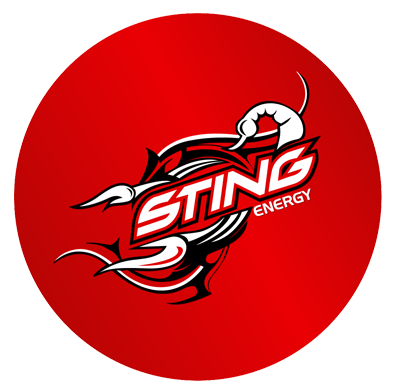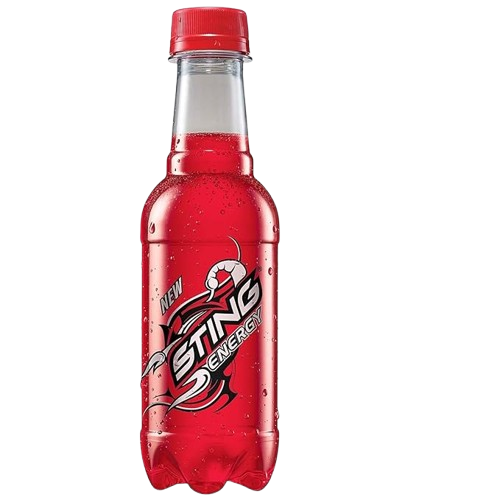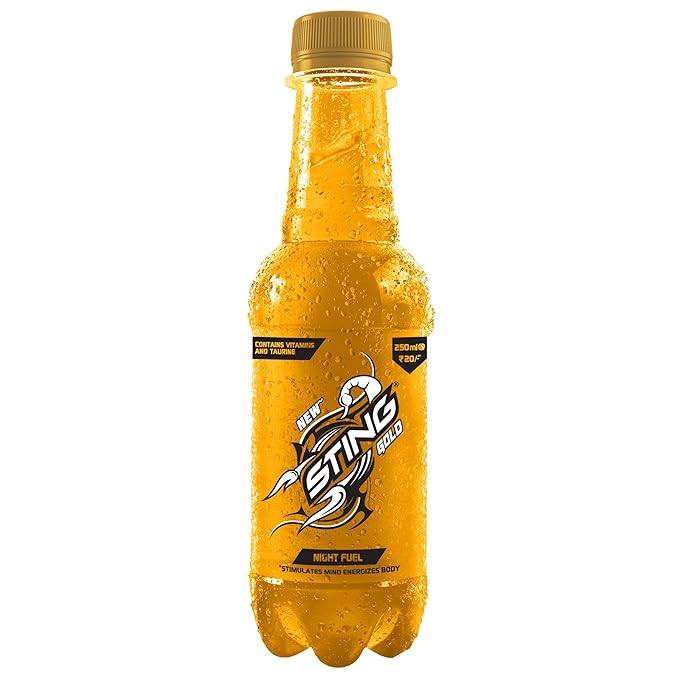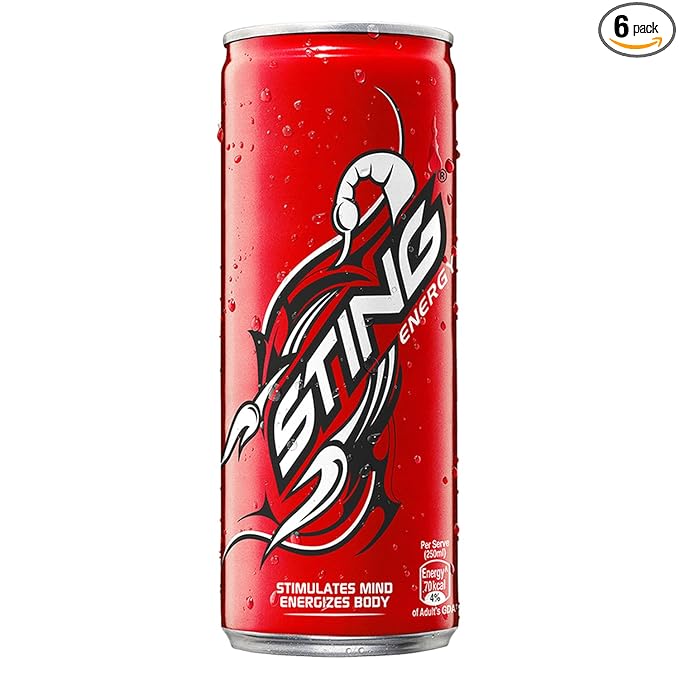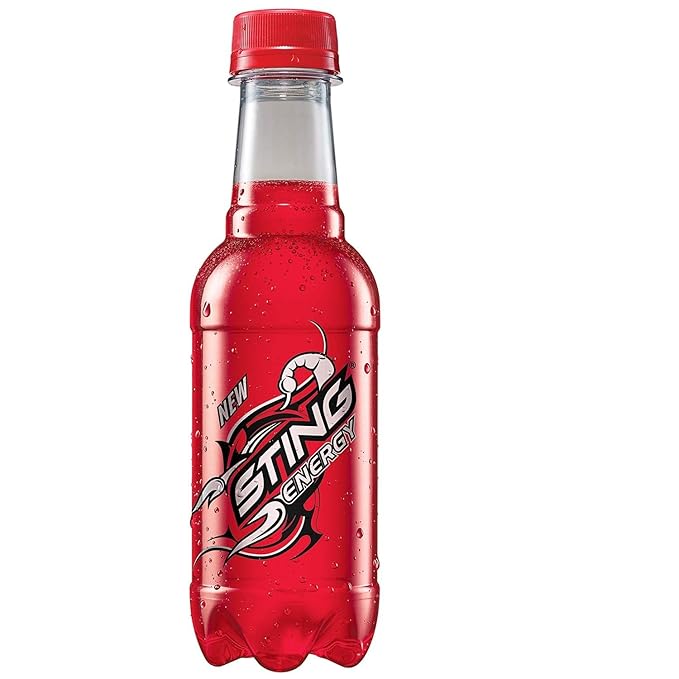Brand Overview
Brand:
Sting
Parent Company:
PepsiCo
Core Categories:
Beverages
Taglines Over the Years:
- Energy Bole Toh Sting
- Electrifying Taste, Instant Charge
Market Context at Launch
India in the Late 2010s
- Energy drinks were a niche category, led by Red Bull, which was expensive and aspirational.
- Indian consumers were becoming more experimental, especially Gen Z and college-goers.
- There was white space for an affordable, mass-market energy drink with youthful appeal.
- Introduce an energy drink at a lower price point, targeting impulse buyers.
- Offer a bold taste and caffeine-kick for a younger audience seeking alternatives to colas.
Marketing Mix (4Ps)
Product Strategy
Core Product
- A carbonated energy drink with caffeine, taurine, and B vitamins.
- Bright red color, sharp citrus-berry flavor — high sensory impact.
- Energy profile: ~200ml provides about 90-100 calories and 80mg caffeine.
- Low unit size (200 ml) to encourage trial and fast consumption.
- Energy positioning with instant uplift and electrifying imagery.
Pricing Strategy
- Aggressively priced at ₹20 for 200 ml, far cheaper than Red Bull (₹100+).
- Occasional offers and bundling in modern retail stores.
- Targeted youth and mass urban markets through value accessibility.
Promotion Strategy
Early Phase (2017–2020): Silent Build-up
- Minimal advertising. Relied on in-store visibility and trials.
- Sampling in college canteens, urban mini-marts, and petrol stations.
- Gained a cult following among college-goers and late-night workers.
- Tagline: “Energy Bole Toh Sting”.
- High-decibel digital and TV campaign starring Akshay Kumar in quirky, slapstick storytelling.
- Focused on instant energy kick and quirky exaggeration—like flying through ceilings or exploding with power.
- Television commercials, YouTube ads, IPL promotions.
- Short-form video marketing on Instagram Reels, YouTube Shorts, etc.
- Meme-friendly campaigns helped build organic virality.
Distribution Strategy
- Distributed through PepsiCo's powerful cold-chain and retail network.
- Available in:
- Kirana stores
- Petrol pumps
- Modern retail outlets
- Food delivery platforms
- College and highway outlets
- Focus on urban Tier 1 & 2 cities, with growing penetration in smaller towns.
Competitive Landscape
Main Competitors
- Red Bull – Premium, international appeal, lifestyle positioning
- Monster Energy – Available, but less mass in India
- Charged by Thums Up – Coca-Cola's response, with cola-energy blend
- Rockstar, Cloud 9, Predator (by PepsiCo) – Niche players, mostly regional/limited reach
Sting's Differentiators
- Affordable and accessible
- Strong brand recall via Akshay Kumar and fun ads
- Small SKU = low barrier to trial
- Mass-market energy drink, not a niche or lifestyle brand
Consumer Perception & Emotional Connect
- Seen as a quirky, affordable, high-energy drink.
- Strong resonance with:
- Students cramming for exams
- Gamers and night owls
- Blue-collar workers looking for a quick recharge
- The red packaging and dramatic ad tone became easily recognizable.
- Considered fun, bold, not-too-serious—unlike premium brands like Red Bull.
Challenges & Strategic Responses
Challenges
- Energy drinks still have regulatory scrutiny and health perception issues.
- Growing awareness of sugar and caffeine levels among consumers.
- Red Bull continues to dominate premium/top-of-mind space.
- Focus on affordability + fun rather than functional claims.
- Avoided positioning as a “serious” or “athletic performance” drink.
- Introduced larger pack sizes (e.g., 250 ml can) to increase shelf presence.
- Continued quirky celebrity-led campaigns and heavy social media focus.
Impact & Market Share
- By 2023–24, Sting had become India's No. 1 energy drink by volume.
- Contributed significantly to PepsiCo India's beverage growth (~double-digit YoY).
- Strong presence in North, Central, and Western India.
- Known for high repeat purchase among younger consumers.
Key Learnings
- Price disruption can open up premium categories to the mass market.
- Taste-led differentiation helps in a segment where functional benefits aren't always understood.
- Humorous, over-the-top advertising builds strong memory in cluttered beverage advertising.
- Energy as a concept resonates deeply in India — across students, workers, and gamers.
- A non-elitist, mass energy brand with coolness can thrive if priced right and distributed well.
Summary
Sting's India journey is a case of category democratization—what Red Bull made aspirational, Sting made accessible. With its bold taste, bold price, and bold advertising, it has carved out a distinct space in India's beverage market. By staying true to its mass-market, fun-first ethos, Sting proves that a brand doesn't need to be premium to become iconic.

